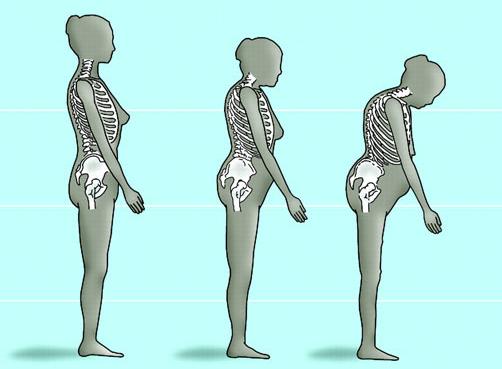
A typical sign of aging is the loss of bone mass. The terms “osteopenia” and “osteoporosis” are often used to describe this process. However, they are different conditions. Osteopenia is the thinning of bone mass and describes low bone density. It is not considered a disease but is a very serious risk factor and precursor to osteoporosis. Osteoporosis is the “fragile bone disease” and is characterized by a loss of bone mass usually due to a deficiency in calcium, vitamin D, magnesium, and other vitamins/minerals. Both conditions can increase risk of fractures. Osteoporosis can result in loss of height, stooped posture, humpback, and severe pain symptoms.
The differentiation between osteopenia and osteoporosis is the measure of bone mineral density (BMD) which signifies the calcium level in bones. The most common method for testing BMD is through Dual Energy X-ray Absorptiometry (DEXA scan). The results are calculated into a “T-score” and compared to the average score for a healthy 30 year-old of the same sex and race. Scores within a certain standard deviation (SD) are considered normal while lower scores are diagnosed with osteopenia or osteoporosis.
There are risk factors that can increase the chances of developing moderate to severe loss of bone mass:
- Gender – Women are at higher risk since they have less bone mass than men.
- Race – Asian and Caucasian women are at higher risk.
- Family History – There is a 50-85% increased risk for those with a family history of low bone mass.
- Age – Most people lose about 0.5% of bone mass every year after age 50.
- Lifestyle – Poor diet lacking calcium and vitamin D, smoking, excessive alcohol or caffeine, and lack of exercise.
- Other – Hyperthyroidism, medications such as prednisone can also cause bone loss.
Things you can do to keep bones healthy:
- Eat right – diet with adequate amounts of calcium, magnesium, vitamins D, K, and C.
- Exercise – regular physical activity including weight bearing exercises.
- Avoid smoking and excessive use of alcohol.
- Regular check-ups after the age of 50.
If you have questions about what type of exercises are appropriate to reduce your risk of developing osteoporosis, contact the professionals at ProActive Physical Therapy & Sports Medicine.

